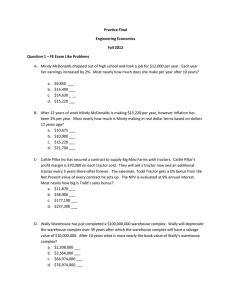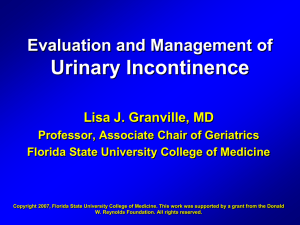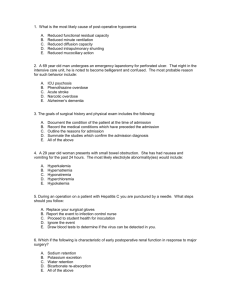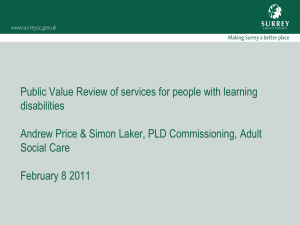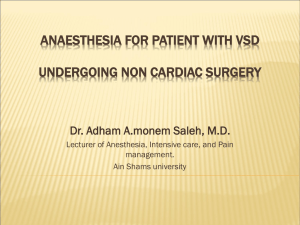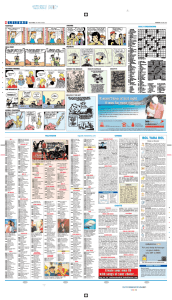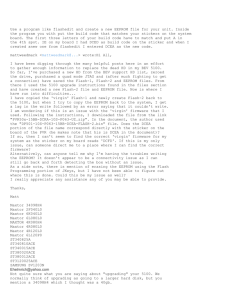Problems
advertisement
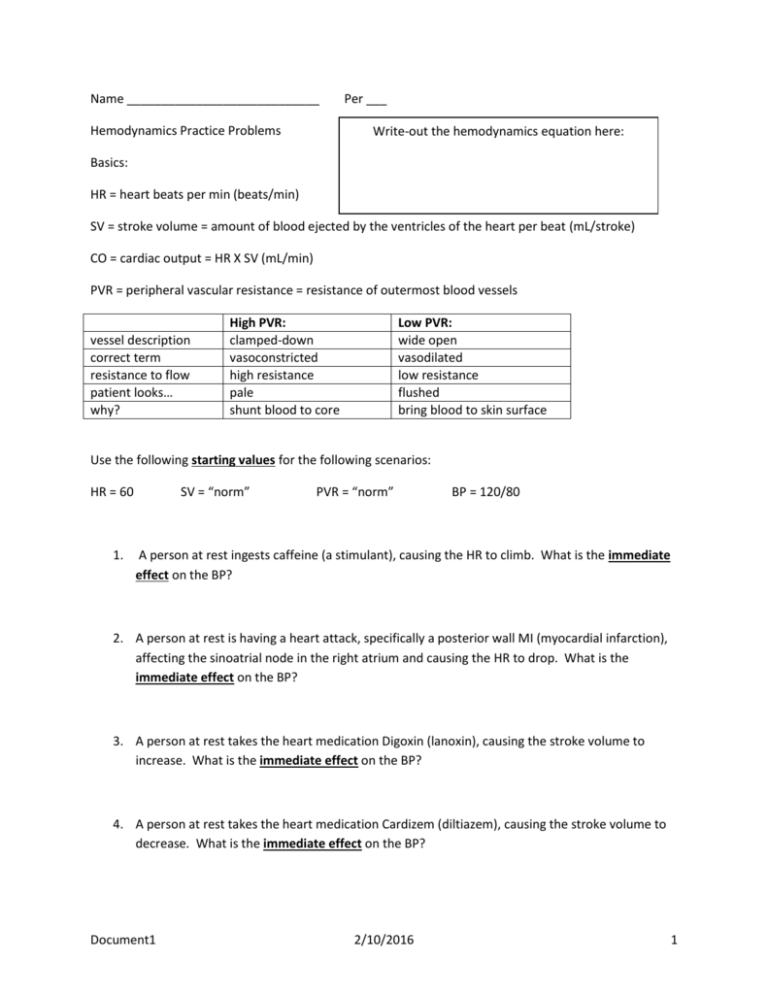
Name ____________________________ Hemodynamics Practice Problems Per ___ Write-out the hemodynamics equation here: Basics: HR = heart beats per min (beats/min) SV = stroke volume = amount of blood ejected by the ventricles of the heart per beat (mL/stroke) CO = cardiac output = HR X SV (mL/min) PVR = peripheral vascular resistance = resistance of outermost blood vessels vessel description correct term resistance to flow patient looks… why? High PVR: clamped-down vasoconstricted high resistance pale shunt blood to core Low PVR: wide open vasodilated low resistance flushed bring blood to skin surface Use the following starting values for the following scenarios: HR = 60 1. SV = “norm” PVR = “norm” BP = 120/80 A person at rest ingests caffeine (a stimulant), causing the HR to climb. What is the immediate effect on the BP? 2. A person at rest is having a heart attack, specifically a posterior wall MI (myocardial infarction), affecting the sinoatrial node in the right atrium and causing the HR to drop. What is the immediate effect on the BP? 3. A person at rest takes the heart medication Digoxin (lanoxin), causing the stroke volume to increase. What is the immediate effect on the BP? 4. A person at rest takes the heart medication Cardizem (diltiazem), causing the stroke volume to decrease. What is the immediate effect on the BP? Document1 2/10/2016 1 5. A person takes cocaine (a vasoconstrictor). a. What is the immediate effect on PVR? b. What is the immediate effect on BP? 6. A person sustains a spinal cord injury, causing peripheral vasodilation. a. What is the immediate effect on PVR? b. What is the immediate effect on BP? Now, let’s examine the homeostatic mechanisms in place to maintain a “normal” blood pressure. Remember, the goal of BP homeostasis is to MAINTAIN A “NORMAL” BLOOD PRESSURE. 7. A patient has taken too much Metoprolol (this is a 1–blocker, which means that it blocks receptors on the heart responsible for heart rate), causing their heart rate to drop. a. What two factors can compensate for this drop in HR? How will they compensate? b. What will the patient look like? 8. A patient has taken a stimulant that increases the force of cardiac contraction, thereby increasing stroke volume. a. What two factors can compensate for this increase in SV? How will they compensate? b. What will the patient look like? 9. A patient with mono who has not yet been medically cleared plays football and sustains a lacerated spleen (in the LUQ). Stroke volume has dropped because there is no longer as much blood in the blood vessels. a. What two factors can compensate for this drop in SV? How will they compensate? b. What will the patient look like? Document1 2/10/2016 2 10. A tennis player has a sinus infection and is taking a decongestant containing pseudoephedrine. This is a potent vasoconstrictor. a. What is the effect on PVR? b. What two factors can compensate for this change in PVR? How will they compensate? c. What will the player look like? 11. You are the athletic trainer at a soccer game. You have just been notified that a spectator has been stung by a bee and is having an allergic reaction. As part of the immune response, mast cells near the bite site are releasing histamine, a potent vasodilator. a. What is the effect on PVR? b. What two factors can compensate for this change in PVR? How will they compensate? c. What will the player look like? Document1 2/10/2016 3

